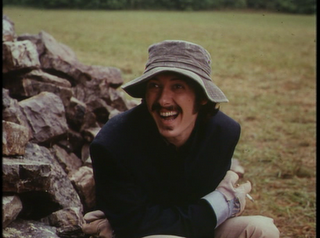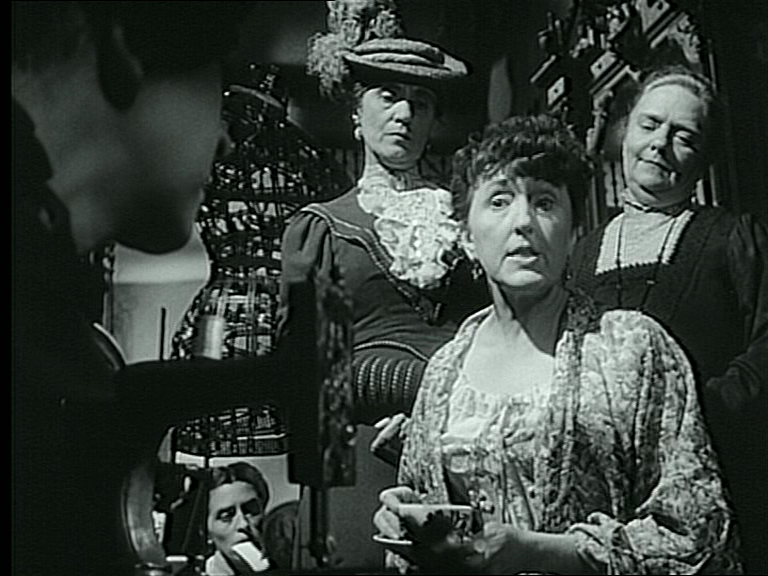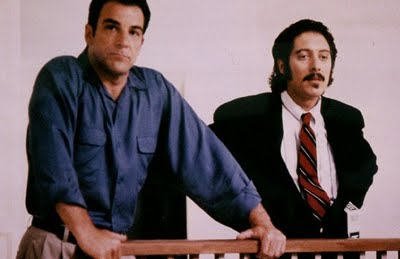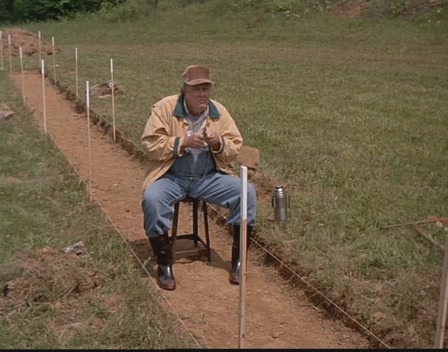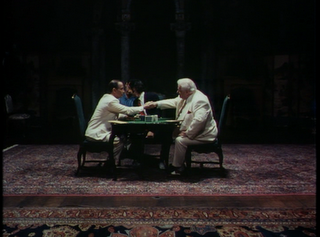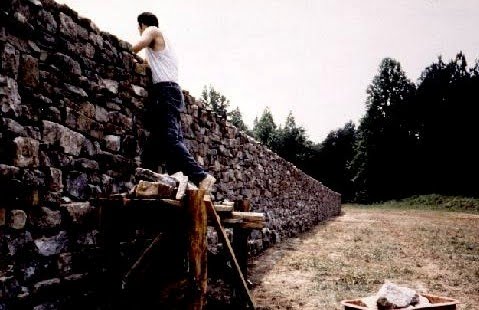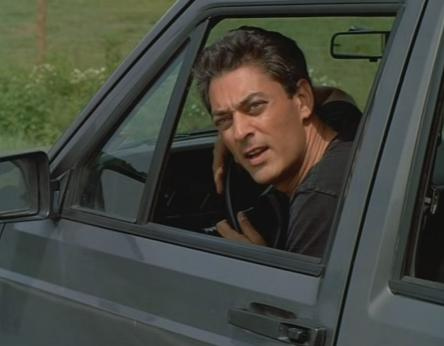From the Chicago Reader (September 24, 1993). Oddly enough, the version of this piece that’s available on the Reader‘s web site and (until recently) here is missing the final five paragraphs, which I’ve just restored by copying them from the printed version that I still have in one of my scrapbooks. — J.R.
THE MUSIC OF CHANCE
** (Worth seeing)
Directed by Philip Haas
Written by Philip and Belinda Haas
With Mandy Patinkin, James Spader, M. Emmet Walsh, Charles Durning, Joel Grey, Samantha Mathis, and Christopher Penn.
In an interview included in his nonfiction collection The Art of Hunger, Paul Auster gives an intriguing account of the major influences on his novels — an account that suggests why these novels aren’t well suited to conventional movie adaptation:
“The greatest influence on my work has been fairy tales, the oral tradition of story-telling. The Brothers Grimm, the Thousand and One Nights — the kinds of stories you read out loud to children. These are bare-bone narratives, narratives largely devoid of details, yet enormous amounts of information are communicated in a very short space, with very few words. What fairy tales prove, I think, is that it’s the reader — or the listener — who actually tells the story to himself. The text is no more than a springboard for the imagination. ‘Once upon a time there was a girl who lived with her mother in a house at the edge of a large wood.’ You don’t know what the girl looks like, you don’t know what color the house is, you don’t know if the mother is tall or short, fat or thin, you know next to nothing. But the mind won’t allow these things to remain blank; it fills in the details itself, it creates images based on its own memories and experiences — which is why these stories resonate so deeply inside us. The listener becomes an active participant in the story.”
If Auster were taken literally, the best medium for adapting his fiction would be the Disney cartoon feature. But in fact the differences between seeing Beauty and the Beast and hearing the story read aloud are profound — as profound as the differences between reading Auster’s beautifully crystalline prose and seeing Philip Haas’s intelligent but fairly literal screen adaptation of The Music of Chance.
An oral storyteller like Orson Welles, who throve on radio drama, had to reinvent film style in the 40s to accommodate his talent to movies. In Citizen Kane he devised many schemes for narrative condensation and visual ellipsis while bringing the darkness of German expressionism back to studio filmmaking. Plainly central to these strategies were the spectator’s imagination and active participation: everything we see in Kane and The Magnificent Ambersons is a kind of visual shorthand for the vast quantity of things we don’t see. The voices of offscreen narrators exert a similar lure, predicated on a comparable sketchiness in what they’re saying, which compels us to furnish the rest.
In terms of plot, Haas’s The Music of Chance is every bit as sketchy as Auster’s novel — even more so, given the deleted material (such as the opening chapter) and a few distracting additions (such as the cutesy, compromised tacked-on ending). But in terms of narrative method, the movie eliminates much of the space for the audience that the novel opens up to the reader, and without employing any film style that might compensate for the reduction. As a result, what makes the novel compulsively readable makes the movie relatively dull; the enforced passivity of conventional moviegoing simply can’t compare with the enforced mental activity of reading a novel. And the meditation on freedom that lies at the heart of the parablelike story in novel and film alike ultimately only cheats on its initial implied promise to tell us something concrete about the contemporary world.
Before The Music of Chance, his first fiction feature, Haas made only documentaries; since the early 80s, they’ve all been about artists, ranging from painter David Hockney (A Day on the Grand Canal With the Emperor of China) to performance artists Gilbert and George (The Singing Sculpture) to traditional artists such as Australian aboriginal ground painters and Malagasy funerary sculptors (in the four-part Magicians of the Earth). Two of these films — The Singing Sculpture and Money Man, about an American conceptual artist who paints and spends his own dollar bills (the only ones I’ve seen) — turned up at the Music Box this past summer. The main point of convergence between these works and The Music of Chance appears to be the novel’s central event — two men settling a $15,000 gambling debt with two eccentric millionaires are forced to build a wall in a meadow out of 10,000 60-pound stones imported from a 15th-century Irish castle. In the novel this prolonged ordeal is a sort of spiritual testing ground for the hero. But Haas (who adapted the book in collaboration with his wife, film editor Belinda Haas) seems to regard the project as an absurdist artwork, as do the two millionaires. And perhaps in the filmmakers’ hands it takes on an additional meaning — as a metaphor for the absurdist task of adapting Auster’s novel in the first place.
The main thing the movie has going for it is the acting — juicy performances by the five male leads (Mandy Patinkin, James Spader, Charles Durning, Joel Grey, and M. Emmet Walsh) give the movie most of whatever life it can claim. Of the two wall builders, Spader has a showier and more aggressive part than Patinkin, while of the wall owners Durning seems a lot more prominent than Grey; but in fact all four project just the right amount of personality and energy for their parts. Walsh — a gifted and familiar character actor — is comparably resourceful as the owners’ servant and the builders’ foreman.
Patinkin plays the hero, Jim Nashe, a Boston fireman who inherits money from his estranged father shortly after his wife leaves him and spends an aimless year on the road, after depositing his two-year-old daughter with his sister in Minnesota. Much of Patinkin’s interesting performance reflects what Auster does as a prose stylist, suggesting some intellectual and spiritual depth beneath a colorless, relatively imperturbable surface. Spader is Jack Pozzi, the brash younger man and professional poker player Nashe picks up on the road; what makes the part flashier than Patinkin’s is the fact that Spader — sporting a mustache and all but unrecognizable in relation to his usual yuppie roles — is clearly having a field day.
Nashe needs a respite from the protracted existential drift triggered by his inheritance (recounted in the novel’s first 20 pages but reduced to a few belated lines of dialogue in the movie) and needs to replenish the money he has left after his year of cross-country driving. So he agrees to stake Pozzi in a poker game with the two millionaires — middle-aged single men who won their riches in a lottery and now share a mansion on an estate in rural Pennsylvania — and split the winnings.
Vain and idle, the nouveau riche millionaires cultivate their separate hobbies. For Stone (Grey), a former optometrist, it’s constructing a scale-model “City of the World” that incorporates his own autobiography as well as solipsistic tokens of his godlike powers. (In more ways than one, this scale-model city is Auster’s parodic representation of his own enterprise.) For Flowers (Durning), a former accountant, it’s collecting historical memorabilia, including the stones from the dismantled 15th-century Irish castle — though apart from the stones, this hobby is ignored in the movie. (In the book, Flowers and Stone cultivate their different hobbies in separate wings of the mansion, but I assume budgetary restrictions prevented Haas from showing or mentioning Flowers’s wing.)
The two men also like to play poker, and their lack of skill is what convinces Pozzi he can win a fortune from them. But since he last saw them play they’ve taken lessons from another poker master, and they wind up winning all of Nashe’s money: $10,000. After further winning Nashe’s car and an additional $10,000 their opponents don’t have, they propose that the men work off their debt by assembling a wall in their meadow out of the stones from the castle. While Pozzi initially recoils at this suggestion, Nashe dutifully accepts, and by the next day they’re reduced to living as indentured servants in a trailer adjacent to the meadow on the fenced-in estate. From that point we no longer see the millionaires — except for the hands (presumably Stone’s) duplicating the growth of the wall in his model city — which only serves the film’s shift from a naturalistic to a more abstract and symbolic terrain.
Auster has cited Samuel Beckett and Franz Kafka as his contemporary masters, and these influences account for much of what is both right and wrong with his novels — as well as what makes them less than ideal as movie material. (Pozzi’s name is most likely derived from Pozzo, in Waiting for Godot, and Nashe’s name probably alludes to Thomas Nashe, the late-16th-century author of the prose romance The Unfortunate Traveller, or the Life of Jack Wilton. The more cosmic significance of names like Stone and Flowers is equally characteristic of Auster.)
Auster’s comments about the spareness of fairy tales, combined with Roland Barthes’ argument about why movies contain too much information to carry the force of fragmentary written texts, help explain why Beckett, Kafka, and Auster are difficult movie sources: “Constraints of representation (analogous to the obligatory rubrics of language),” Barthes argues, “makes it necessary to receive everything: of a man walking in the snow, even before he signifies, everything is given to me; in writing, on the contrary, I am not obliged to see how the hero wears his nails — but if it wants to, the Text describes, and with what force, Hölderlin’s filthy talons.”
Much as Joyce was the key modernist influence on Beckett, as well as other English-language novelists, Beckett’s spare narratives of inertia and absence have influenced later novelists, and often of very different kinds: the first two novels of Rudolph Wurlitzer, Nog and Flats (both key literary documents of 60s counterculture sensibility), are as drenched in Beckett as Auster’s much straighter and squarer novels. The crucial difference, I would argue — which is also the crucial difference between a modernist and a postmodernist approach — is that while Wurlitzer used Beckett to process his experience of the 60s, Auster uses him more often, as he uses Kafka, as a way of processing his experience of literature — an approach he makes more palatable to pop taste with stylistic infusions of such hard-boiled writers as Raymond Chandler. (Kafka, who never completed any of his novels, was properly speaking a writer of parables and fragments rather than a novelist; in effect Auster’s The Music of Chance starts with a Beckett-like protagonist — a traveler without direction — and leads us into the more abstract and spiritual realm of a Kafka parable once Nashe and Pozzi arrive at the meadow.) It’s worth noting that Auster’s more recent novel, Leviathan — which tries to deal with the radical sociopolitical awakening of the 60s, but unlike Wurlitzer, only at secondhand, as imagined rather than lived experience — is a sour failure.
Auster’s appropriations place his fiction in a category critic John Powers has called “Metaphysical Pop”– “a smart, eerily cool style practiced by novelists as diverse as Stanislaw Lem and Michel Butor, Adolfo Bioy Casares and Muriel Spark, Don DeLillio and Haruki Murakami. All these writers are literary game players who suck you in with clever plot hooks, often derived from science fiction or noir, but eventually wind up dealing in existential abstractions — what Murakami might call wild-sheep chases.”
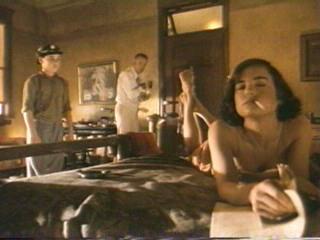
As Powers defines it, Metaphysical Pop is definitely a postmodern genre. What distinguishes a genuinely modernist film like King of the Hill — which also deals with a personal and spiritual ordeal brought about by economic deprivation but is grounded in a very specific time and place (defined by the A.E. Hotchner memoir on which the movie is based and Steven Soderbergh’s rigorous fidelity to it) — from the postmodernist The Music of Chance is the fact that this film (and novel) can deal with such an ordeal only as an Idea, or what Powers calls a “wild-sheep chase,” plunked down into the center of a fenced-off meadow that has been carefully isolated from the world as we know it. Powers’s definition also helps explain why Auster’s trafficking in secondhand literary experience is so much less powerful than his more authentic delving into his own experience: “Portrait of an Invisible Man,” the first section of his book The Invention of Solitude, is a potent investigation into the mysteries surrounding his own late father; significantly, Beckett, Kafka, and Chandler are nowhere in evidence.
In their very different ways Kafka, Beckett, and Chandler all stand at the end of the modernist tradition –dealing, however elliptically, with their own firsthand responses to the 20th century. Metaphysical Pop, on the other hand, deals with those experiences in lighter, less committed ways (significantly, the Penguin editions of Auster’s books proliferate in airports; most of them make ideal travel reading). Haas’s movie — by lightening the darkness with which Auster’s novel ends, literally grafting on a “happy ending” in which Auster himself makes a cameo appearance — only clarifies the degree to which Auster, for all his craft and intelligence, has been partially fooling us all along. Metaphorically speaking, Auster’s music of chance has been mediated by the Muzak of the bottom line — a process the movie can only intensify.


